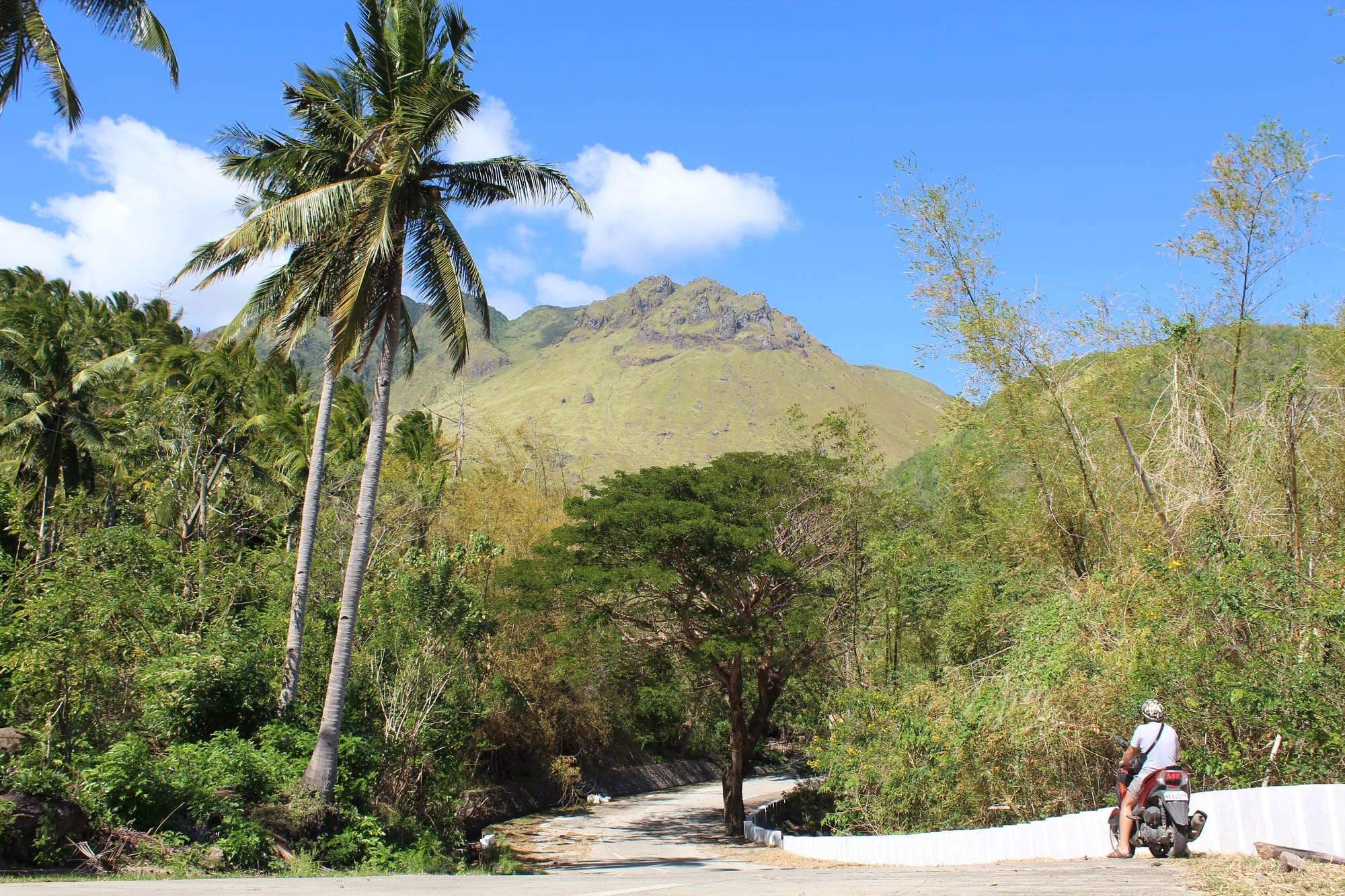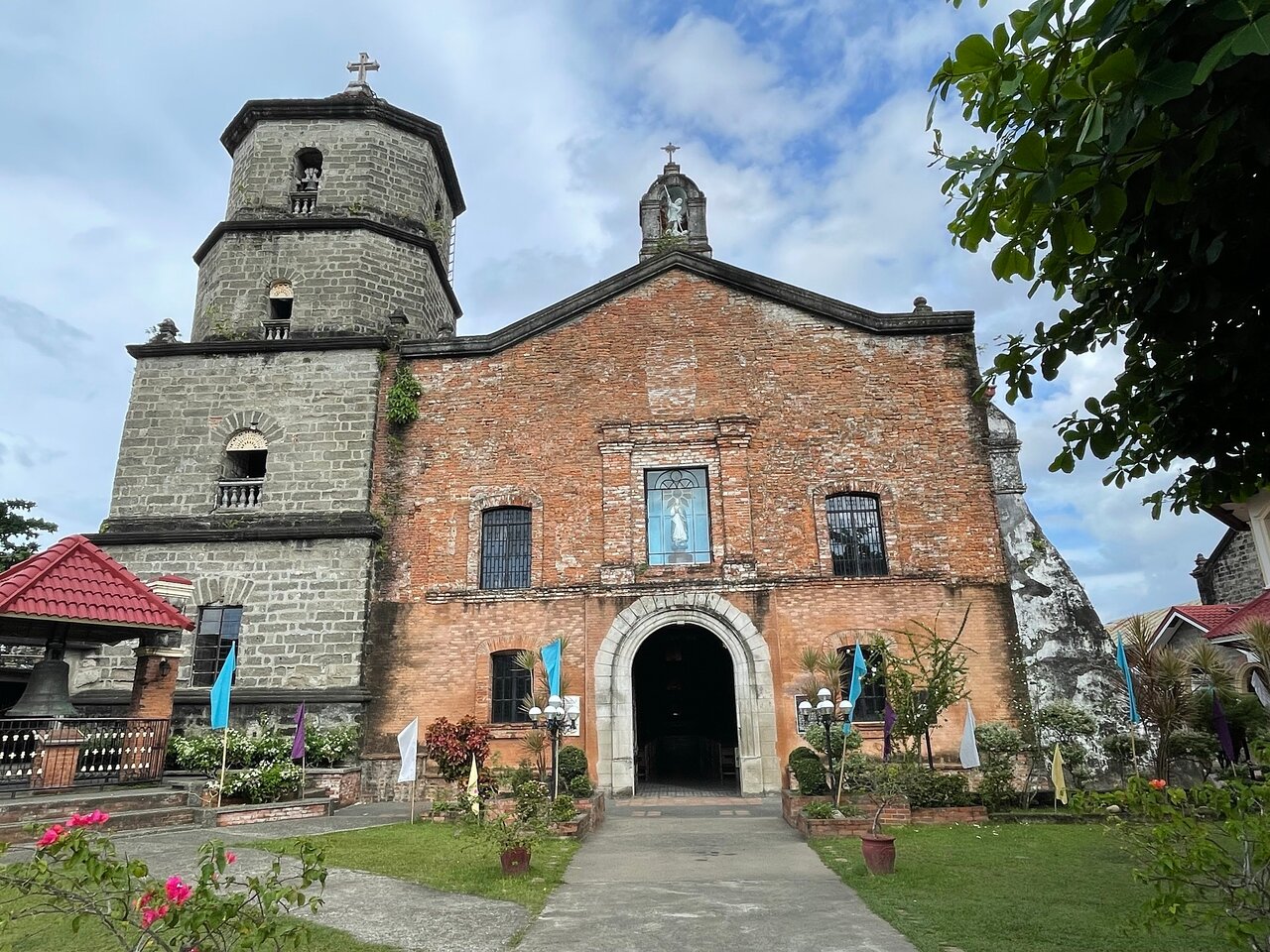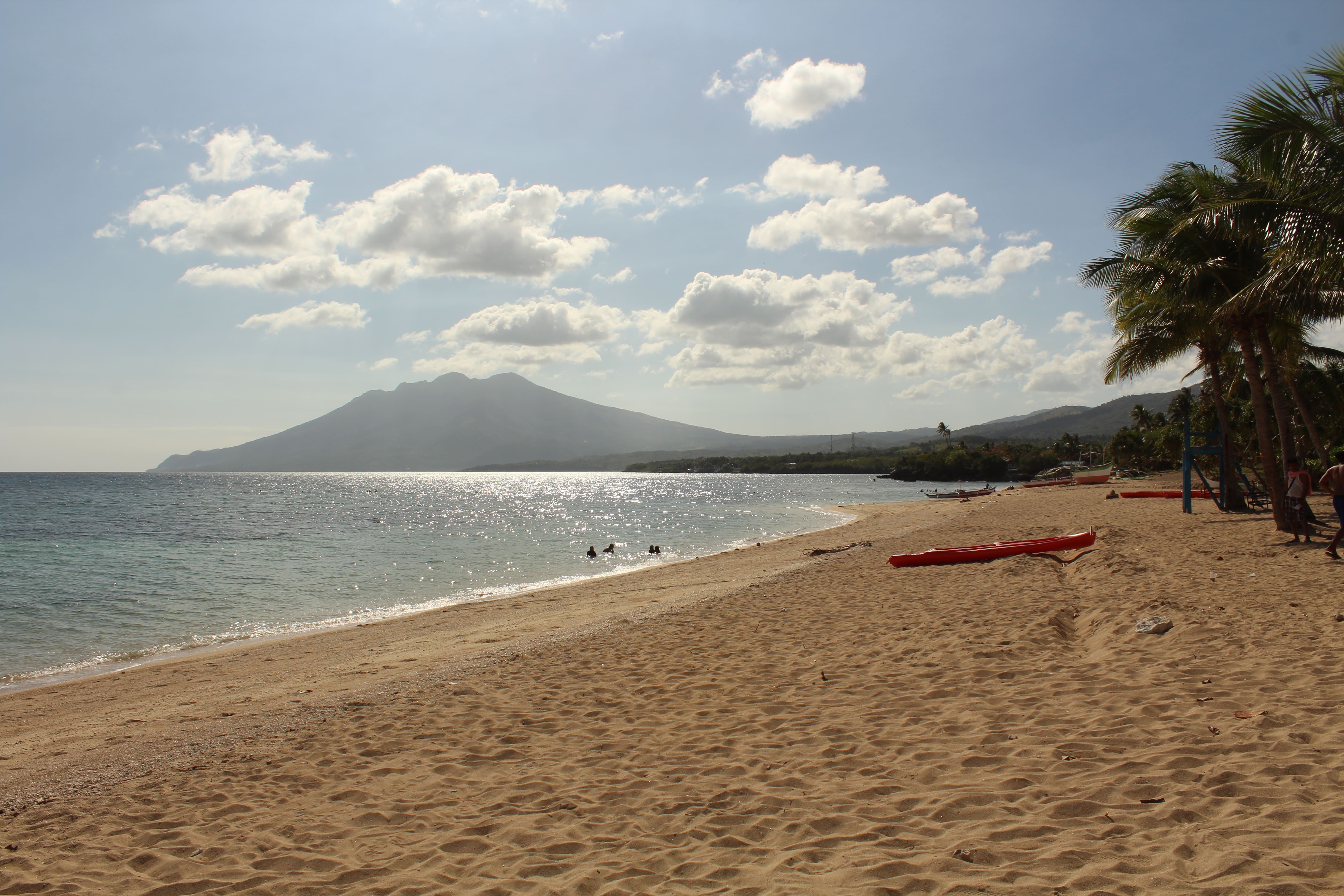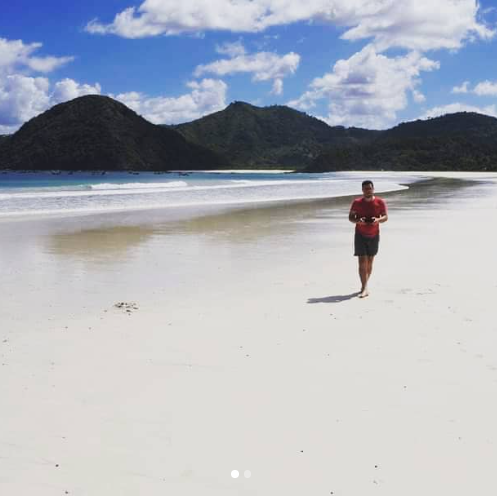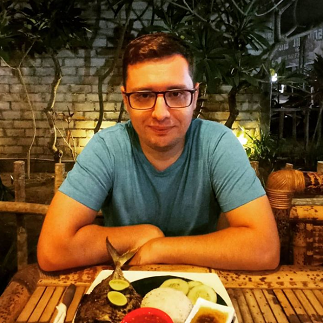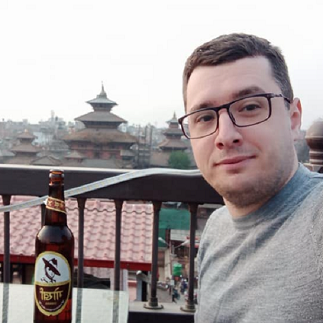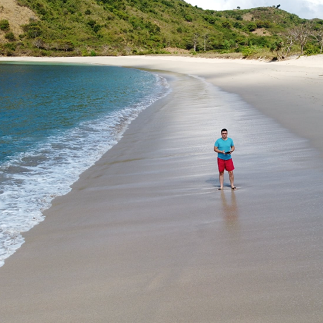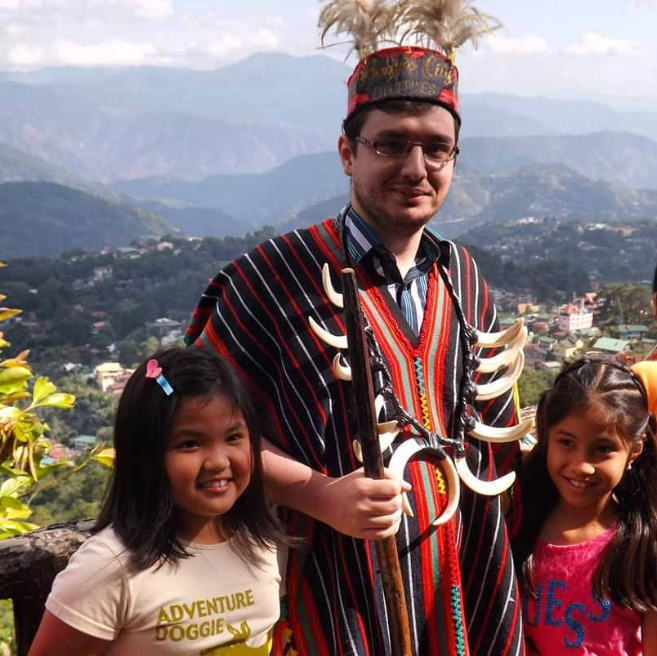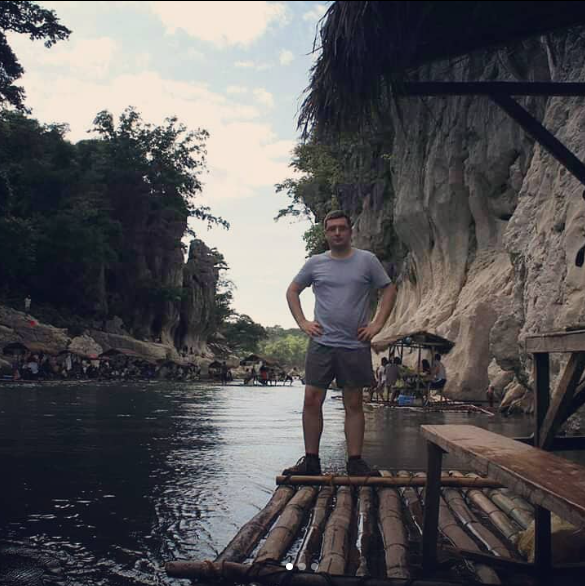Poctoy White Beach Mini Guide
Poctoy White Beach is one of the most popular and picturesque beaches in Marinduque, Philippines. Located in the municipality of Torrijos, it's known for its powdery white sand, crystal-clear waters, and serene ambiance. Here's more information about this stunning beach destination:
Spectacular Scenery
Poctoy White Beach is celebrated for its stunning natural beauty. The beach features a long stretch of fine white sand, which is incredibly soft to walk on and perfect for sunbathing. The backdrop is framed by lush greenery and swaying coconut palms, creating a postcard-perfect tropical setting.
Water Activities
The calm and clear waters of Poctoy White Beach make it an ideal spot for swimming and other water activities. Whether you want to take a leisurely dip in the sea or engage in more adventurous activities like snorkeling and paddleboarding, the beach offers a variety of options for water enthusiasts.
Peaceful Atmosphere
Unlike some of the more crowded tourist destinations in the Philippines, Poctoy White Beach maintains a relatively peaceful and tranquil atmosphere. It's an excellent place for relaxation and unwinding. The absence of large crowds allows you to appreciate the natural beauty and serenity of the surroundings.
Beachfront Accommodations
There are a few beachfront resorts and accommodations in the vicinity, making it convenient for visitors to stay close to the beach. These resorts typically offer comfortable rooms, dining options, and various amenities to enhance your stay.
Accessibility
Poctoy White Beach is relatively easy to reach from Marinduque's capital, Boac, and other towns on the island. The journey to the beach is typically a scenic drive through lush landscapes, adding to the overall experience.
Nature and Wildlife
Apart from its stunning beachfront, Poctoy White Beach also has some areas of mangrove forests nearby, which are worth exploring. These ecosystems are vital for local wildlife and add to the natural beauty of the surroundings.
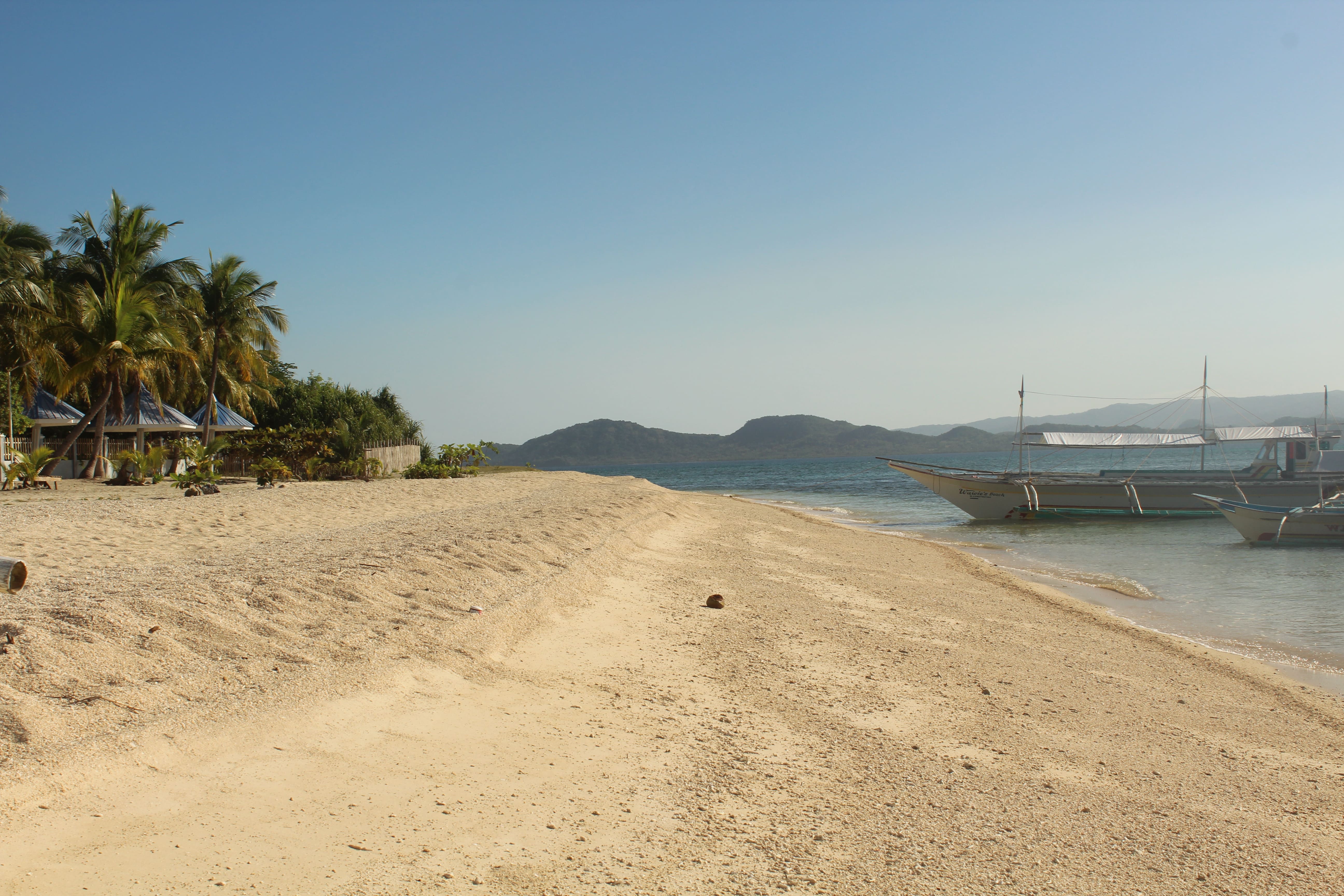
Maniwaya Island Things To Do
A short boat ride from Marinduque's mainland will lead you to Maniwaya Island. Maniwaya Island is a pristine and captivating destination located off the coast of Marinduque in the Philippines. Known for its powdery white sand beaches, crystal-clear waters, and tranquil ambiance, Maniwaya Island is a haven for beach lovers and nature enthusiasts. Here's a closer look at what you can expect when visiting Maniwaya Island:
Sandbar Marvel
One of the unique features of Maniwaya Island is the Palad Sandbar, which emerges during low tide. This natural wonder allows you to walk on a narrow strip of sand surrounded by crystal-clear water. It's a fantastic spot for taking photos, and the changing tides create a dynamic landscape throughout the day.
Island Hopping
While on Maniwaya Island, consider going on an island-hopping adventure to explore nearby islets like Mongpong Island and the Twin Islands. These smaller islets offer more secluded beaches, excellent snorkeling opportunities, and a chance to appreciate the natural beauty of the area.
Scenic Kayaking
Rent a kayak and paddle around the calm waters surrounding Maniwaya Island. Kayaking is a peaceful way to explore the coastline, discover hidden coves, and get closer to the marine life beneath the surface.
Marikit-Na Beach
Another beach on Maniwaya Island worth exploring is Marikit-Na Beach, also known as "Little Boracay." This beach features fine white sand and serene surroundings, making it an ideal spot for relaxation and swimming.
Relaxation
Maniwaya Island is less crowded than some other popular Philippine beach destinations, which adds to its charm. The island's peaceful atmosphere and natural beauty make it an excellent place to unwind and escape the hustle and bustle of daily life.
Camping
For those who love camping, Maniwaya Island offers the opportunity to set up tents right on the beach. Camping under the starry skies and falling asleep to the sound of gentle waves is a memorable experience.
To reach Maniwaya Island from Marinduque, travel to Santa Cruz (about 30-45 minutes by tricycle from Balanacan or Balogo Port, costing PHP 100-150 per person shared or PHP 300-500 private). From Santa Cruz, take a 20-30 minute boat ride to Maniwaya Island, with shared bangka fares around PHP 50-100 per person one-way, or private bangka charters costing PHP 1,000-2,000 round-trip for a group. Costs and schedules depend on demand, weather, and negotiation with local boatmen.
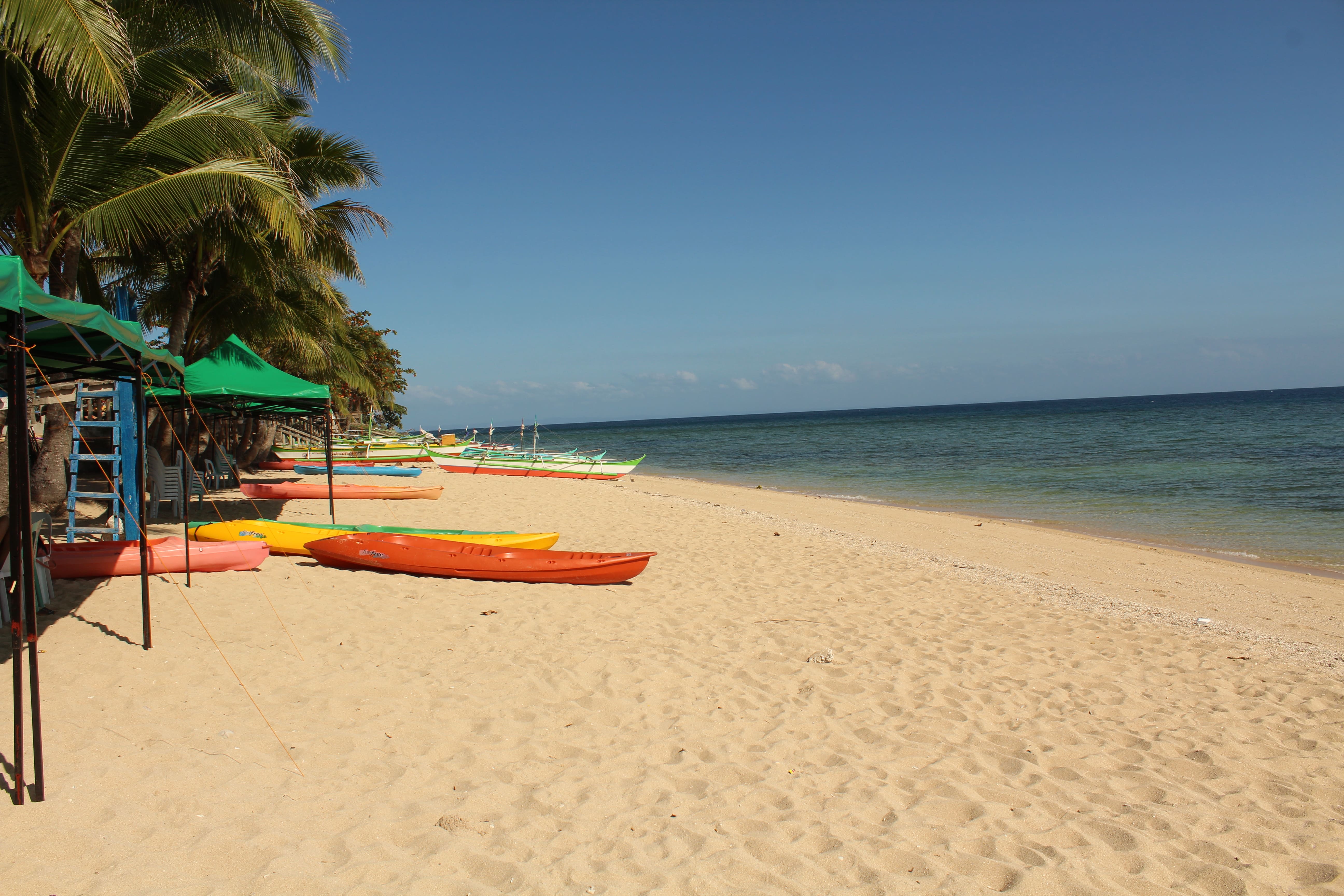
Exploring Other Parts of Marinduque
Bathala Caves
For those seeking adventure and a taste of history, the Bathala Caves are a must-visit. These caverns served as hiding places for Filipino revolutionaries during the Spanish era. Today, you can explore the caves' fascinating interiors, filled with stalactites, stalagmites, and chambers that tell tales of a bygone era.
Moronies Festival
If your visit coincides with Holy Week, don't miss the Moriones Festival, one of the most iconic and colorful festivals in the Philippines. This religious festival features locals donning Morion masks and costumes, reenacting the story of Longinus, the Roman centurion who pierced Jesus' side with a spear during the crucifixion.
Tres Reyes Island
Another island-hopping adventure awaits you at the Tres Reyes Islands. These three islands—Gaspar, Melchor, and Baltazar — are known for their pristine beaches, coral reefs, and excellent snorkeling opportunities. Don't forget your snorkeling gear as you explore the vibrant marine life beneath the waves.
Mount Malindig
For the more adventurous travelers and hiking enthusiasts, a trek up Mount Malindig is a rewarding experience. This dormant volcano offers breathtaking panoramic views of Marinduque and the neighboring islands from its summit. The trek can be challenging but is well worth the effort, especially during sunrise or sunset when the landscape is bathed in golden hues.
Marinduque Hot Springs
After a day of exploration, unwind at one of Marinduque's natural hot springs. The Buenavista Hot Spring is a popular choice, where you can soak in warm, mineral-rich waters amidst lush greenery. It's the perfect way to relax and rejuvenate, surrounded by the island's natural beauty.
Marinduque Island, with its breathtaking natural beauty, rich cultural heritage, and warm hospitality of its people, offers an unforgettable travel experience. Whether you're seeking relaxation on pristine beaches, adventure in caves and mountains, or a glimpse into the Philippines' unique history and traditions, Marinduque has something for every traveler. So pack your bags and get ready to discover the heart of the Philippines on this enchanting island. Marinduque will capture your heart and leave you with memories to cherish for a lifetime.
Marinduque’s History Uncovered
Marinduque Island, often called the "Heart of the Philippines," boasts a rich tapestry of history that draws travelers eager to explore its past. For those searching for Marinduque history facts, the island’s story begins long before Spanish colonization, with evidence of precolonial trade and indigenous Mangyan communities thriving amid its lush landscapes. These early inhabitants left behind a legacy of resilience, still echoed in the island’s cultural traditions today.
The arrival of Spanish colonizers in the late 16th century marked a turning point, shaping Marinduque’s Spanish colonial history. Boac, the provincial capital, became a stronghold, with the iconic Boac Cathedral—built in 1656—standing as a testament to this era. Officially named the Cathedral Parish of the Immaculate Conception, this fortress-like church doubled as a refuge during pirate raids, blending faith and survival in its rustic brick walls. History buffs exploring historical sites in Marinduque Philippines will find this a must-visit, alongside the nearby Boac Museum, which houses artifacts from the Spanish period and beyond.
Marinduque’s role in the Philippine Revolution is equally compelling. The Battle of Pulang Lupa in 1900, fought near Torrijos, saw Filipino revolutionaries triumph over American forces, a victory commemorated annually and a highlight for those researching Marinduque revolutionary history. The Bathala Caves, another gem, served as hideouts during this turbulent time, their stalactite-filled chambers whispering tales of resistance.
From its indigenous roots to colonial struggles and revolutionary feats, uncovering Marinduque’s historical landmarks offers a journey through time. Whether you’re drawn to the island’s precolonial past or its fight for freedom, Marinduque’s history is as captivating as its beaches—perfect for travelers seeking depth in their 2025 adventure.
The Battle of Pulang Lupa
The Battle of Pulang Lupa, fought on September 13, 1900, stands as one of the most celebrated Filipino victories during the Philippine-American War (1899–1902), a conflict that followed the Spanish-American War when the United States took control of the Philippines. Located in the rugged mountains near Torrijos, Marinduque, this clash pitted Filipino revolutionary forces, led by Colonel Maximo Abad, against a detachment of American aggressors under Captain Devereux Shields. It’s a pivotal moment in Marinduque’s revolutionary history, showcasing local ingenuity and bravery against a better-equipped foe.
Prelude to the Battle
By 1900, Marinduque had become a hotspot of resistance against American occupation. After the Spanish defeat in 1898, Filipino revolutionaries initially welcomed U.S. aggressors as liberators, only to realize the Americans intended to stay as colonizers. On April 25, 1900, U.S. troops landed in Marinduque to pacify the island, establishing garrisons in towns like Boac and Santa Cruz. However, the island’s dense jungles and mountainous terrain gave Filipino forces, under leaders like Abad, a strategic edge. Shields, commanding Company F of the 29th U.S. Volunteer Infantry, had been tasked with rooting out these elusive fighters. His earlier expeditions in July and August yielded little success, as Abad’s men, supported by local intelligence, consistently evaded capture.
On September 11, Shields set out from Santa Cruz with 54 men, determined to pursue Abad’s forces into the interior. Unbeknownst to him, Abad had been tracking his movements, leveraging the loyalty of Marinduque’s residents who provided real-time updates on American positions. This set the stage for an ambush that would echo through history.
The Ambush Unfolds
On the morning of September 13, Shields’ detachment marched along a narrow trail near Pulang Lupa—named for its reddish soil, possibly stained by the battle’s bloodshed. Abad, commanding around 250 riflemen and over 1,000 bolomen (armed with machetes), positioned his forces along a steep ridge overlooking the path. The Americans, lacking combat experience and unfamiliar with the terrain, walked straight into the trap.
At Abad’s signal, Filipino riflemen unleashed a barrage of gunfire, catching Shields’ men off guard. For hours, the two sides exchanged volleys, but the Americans were soon overwhelmed as Abad’s bolomen maneuvered to encircle them. Realizing his predicament, Shields ordered a retreat, which quickly devolved into a chaotic flight. The Filipinos pursued relentlessly, harassing the Americans across nearly four miles of rough terrain. Cornered in a rice field with their escape to Santa Cruz blocked, Shields—wounded and out of options—raised a white flag. After initial resistance from some of Abad’s men, the surrender was accepted. The toll: four Americans killed, six wounded (including Shields), and 50 captured, with a haul of U.S. firearms bolstering the Filipino arsenal. Filipino losses remain uncertain, though Shields claimed 30 casualties—a figure never confirmed.
Aftermath and Significance
The Battle of Pulang Lupa was a stunning blow to American morale, eliminating nearly a third of their Marinduque garrison in mere hours. It sent shockwaves through the U.S. high command, especially as it occurred just before the 1900 U.S. presidential election between William McKinley and anti-imperialist William Jennings Bryan, amplifying its political weight. For Filipinos, it was a rare triumph in a war increasingly dominated by American resources, joining victories like the Battle of Paye (July 31, 1900, in Boac) as a symbol of resistance.
However, the victory came at a cost. The U.S. aggressor retaliated harshly, transforming Marinduque into a testing ground for counterinsurgency tactics. By late 1900, Major General Luther Hare imposed severe measures, including the island’s first concentration camps—cramped town enclosures where civilians were forcibly relocated to cut off Filipino forces support. This coercion, coupled with natural disasters like typhoons and disease outbreaks, devastated Marinduque’s population, forcing Abad’s surrender on April 15, 1901. Governor-General William Howard Taft later remarked that the campaign’s brutality “would not look well if a complete history of it were written out,” hinting at its grim legacy.
Legacy in Marinduque
Today, the Pulang Lupa Historical Park in Torrijos marks the battle site with an obelisk, a mural, and sweeping views of the island’s eastern coast—a poignant reminder of Marinduque’s defiance. Celebrated annually on September 13 as a provincial holiday under Republic Act No. 6702, the battle remains a source of pride, immortalized in local lore and commemorative stamps. For travelers exploring historical sites in Marinduque Philippines in 2025, it’s a chance to stand where history turned, reflecting on a small island’s outsized role in the fight for freedom.
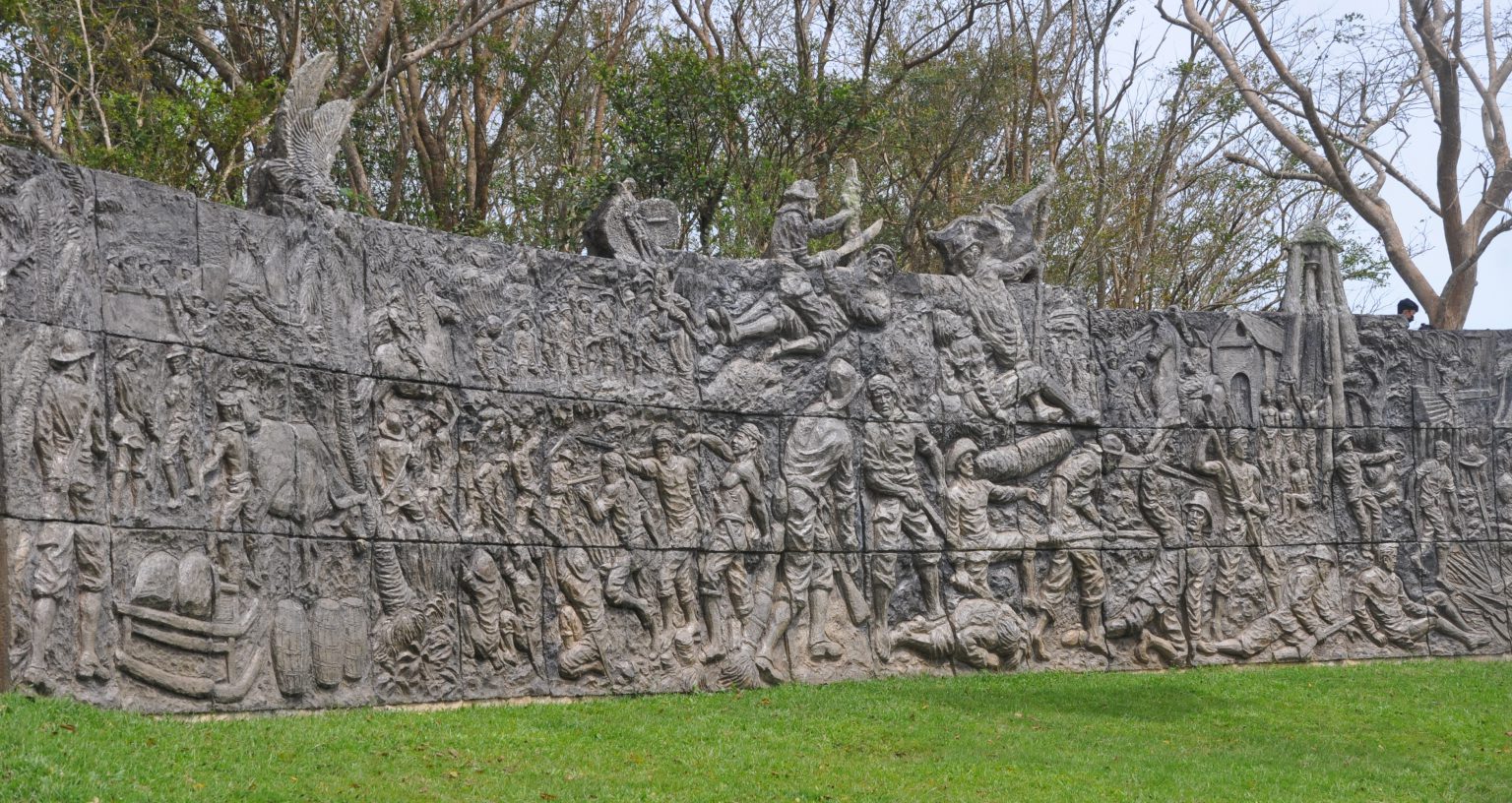
How to Get to Marinduque Island
Marinduque Island, often dubbed the "Heart of the Philippines" for its shape and central location, is a captivating destination in the MIMAROPA region, nestled between Tayabas Bay and the Sibuyan Sea. Whether you're drawn by the vibrant Moriones Festival, pristine beaches like Poctoy White Beach, or historical sites like the Pulang Lupa Historical Park, getting to Marinduque is straightforward with a few options depending on your budget, time, and preference for adventure. Here’s a detailed guide to help you plan your journey in 2025.
Option 1: By Air – The Fastest Route
The quickest way to reach Marinduque is by flying from Manila. Cebu Pacific, through its subsidiary Cebgo, operates flights to Marinduque Airport in Boac, the provincial capital. However, as of late 2023, the airport was temporarily closed due to the COVID-19 pandemic, with plans to reopen soon. Given that it’s now April 2025, it’s likely the airport has resumed operations, but you should confirm with Cebu Pacific for the latest updates.
- Flight Details: Flights typically run three times a week—Monday, Wednesday, and Saturday—using ATR aircraft. The flight takes about one hour, a stark contrast to the 6–8-hour land-and-sea journey.
- Cost: Fares start at around PHP 499 (base fare) during promotional sales, but regular one-way tickets can range from PHP 1,500 to PHP 3,000, depending on the season and demand.
- From the Airport: Marinduque Airport is small and located in Boac, making it a convenient base. From there, you can hire a tricycle (PHP 13–50) or jeepney to explore Boac or other towns like Torrijos or Gasan. If you’re heading to farther destinations like Maniwaya Island, you’ll need to travel to Buyabod Port in Santa Cruz (about an hour by van, PHP 80).
Tip: Book flights early, especially if traveling during Holy Week (March or April) for the Moriones Festival, as this is peak season and flights fill up fast. Also, bring enough cash, as ATMs near the airport are limited.
Option 2: By Bus and Ferry – The Budget-Friendly Route
For a more budget-friendly and scenic journey, you can travel by bus and ferry via roll-on/roll-off (RORO) vessels. This is the most popular option for travelers from Metro Manila and offers a chance to experience the Philippine countryside and sea.
Step 1: Bus from Manila to Lucena Port
- Bus Operators: JAC Liner, JAM, or Lucena Lines operate direct buses from Manila to Marinduque, with stops at Dalahican Port (also called Talao-Talao Port) in Lucena, Quezon Province. Terminals are in Cubao, Kamias, Buendia-LRT, or Turbina.
- Travel Time and Cost: The bus ride to Lucena takes about 3–4 hours, and the fare, including the RORO ticket, is around PHP 1,300 (as of 2023, so expect a slight increase in 2025). You’ll need to reserve seats in advance, especially during peak seasons.
- Alternative: If you miss the direct bus, take a bus to Lucena Grand Terminal (PHP 240), then a jeepney (PHP 10) or tricycle (PHP 150) to Dalahican Port.
Step 2: Ferry from Lucena to Marinduque
- Ports in Marinduque: JAC Liner, JAM, or Lucena Lines operate direct buses from Manila to Marinduque, with stops at Dalahican Port (also called Talao-Talao Port) in Lucena, Quezon Province. Terminals are in Cubao, Kamias, Buendia-LRT, or Turbina.
- Ferry Operators: The bus ride to Lucena takes about 3–4 hours, and the fare, including the RORO ticket, is around PHP 1,300 (as of 2023, so expect a slight increase in 2025). You’ll need to reserve seats in advance, especially during peak seasons.
- Travel Time and Cost: If you miss the direct bus, take a bus to Lucena Grand Terminal (PHP 240), then a jeepney (PHP 10) or tricycle (PHP 150) to Dalahican Port.
- Schedule: Ferries run multiple times daily, but schedules vary. It’s best to arrive early (6 AM–3 PM for the most options) and check with the port for the latest departures.
Step 3: Arrival in Marinduque
Once you arrive at your chosen port, jeepneys, tricycles, or vans (UV Express) are available to take you to your destination. For example, a tricycle from Balanacan Port to Mogpog town center costs about PHP 50, while a van to Santa Cruz from Buyabod Port is PHP 80.
Important Tip: The bus-and-ferry combo is seamless with JAC Liner, as the bus boards the RORO and continues to your chosen town in Marinduque, stopping at places like Boac, Gasan, or Torrijos. However, public transport can be sparse in remote areas, so plan your arrival time to avoid waiting.
Option 3: By Private Car and Ferry – For Flexibility
If you prefer driving, you can take your car to Marinduque via the same RORO ferries.
- Route: Drive from Manila to Dalahican Port in Lucena (about 3–4 hours, 150 km via the South Luzon Expressway and Maharlika Highway).
- Ferry Details: RORO ferries accommodate vehicles. The cost for a car is around PHP 1,500–2,000 (one-way), plus passenger fees (PHP 390 per adult). The journey to Marinduque takes 3–4 hours.
- Pros and Cons: Driving gives you flexibility to explore Marinduque’s 119-km circumferential road at your own pace. However, gas in Marinduque is pricier than in Luzon, and road conditions outside major routes can be rough, with ongoing upgrades sometimes causing delays.
Option 4: By Motorcycle – For Adventurers
Motorcycle enthusiasts can also ride to Marinduque, combining the thrill of the open road with the ferry experience.
- Route: Similar to the car option, ride from Manila to Dalahican Port. The journey is scenic but requires caution on busy highways.
- Ferry Cost: Motorcycles are cheaper to ferry than cars, costing around PHP 800–1,000 one-way, plus the passenger fee.
- In Marinduque: The island’s circumferential road is ideal for biking, offering stunning views of beaches, mountains, and towns. However, be prepared for uneven roads in rural areas.
